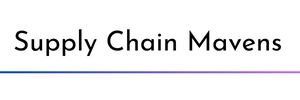Image: Pixabay
It’s been a whirlwind of a ride in 2023 (I’m hearing promises of calm – but not until 2025).
With all that’s going on, two different, but interconnected trends are present that will have huge and continuing effects on your supply chain performance.
Trend 1: AI use
It’s easy to find articles on AI and the push to make it mainstream for supply chain operations. To succeed, you need start with a company AI strategy that directs and narrows what AI may be brought in, how it should be used, and what it should deliver based on company policy and performance goals.
The overarching policy should position AI company-wide, not just for supply chains or a portion of the business. You will probably implement AI narrowly at first, meaning you introduce an AI application to enhance a specific part of your supply chain, such procurement. All narrow applications must meld together (integrate seamlessly) to provide overall AI capabilities. Hence the need for an AI strategy.
It is vital that you create requirements first before AI implementation. You must know and communicate the performance gaps AI is to help close.
Second, analyze potential risks. Risks include the ability of your data systems to handle the quantity of data as well as whether your data architectures are setup to accommodate new data use cases. Risk includes AI acceptance by your employees. Risk incorporates determining where internal sabotage may occur. By holding off solution implementation until planning and risk evaluation is complete, and AI’s role in the final solution is clear, you will save yourself many headaches, as well as lost time and money.
Trend 2: Increasing regulations
Climate disclosures, cybersecurity, technology legislation
California recently passed climate disclosure legislation. Large companies, both public and private, will need to disclose their annual carbon emissions in 2026 (thank goodness for carbon accountants).
Scope 3 emissions in those same supply chains must be disclosed by 2027. Scope 3 emissions can’t be controlled by the reporting company. They are a result of supply chain activity by partners, emissions from product use by customers during the product lifecycle, and emissions associated with returns.
In parallel, the EU and UK are moving and coordinating on their individual CBAM regulations (carbon border adjustment mechanism) which are designed to tax low-cost products created by high polluting production in countries with lax climate policies.
The list goes on and on - and we haven’t even looked at cybersecurity yet.
The trick for regulatory compliance is to have maps of your supply chains, like SCOR thread diagrams, that allow you to understand what happens where. For example: where emissions occur, where data on emissions is taken, where the data is sent, where weaknesses may be in your supply chain that could allow a cyberattack, and so on. These same SCOR maps also call out process metrics since they are tied into processes. Working with a framework allows you to pass internal and external audits as well as provide solid support for data you are disclosing.
The use of a framework allows you to use the same language, metrics, and mapping techniques throughout your global networks to speed communication and improvements. While your partners may not use the same framework, you will still be able to effectively communicate as well as transmit requirements using standard metric definitions. You can exploit the promise of AI while keeping a handle on required governance within your supply chains.
#AI #governance #strategy #riskmanagement #regulatorycompliance #SCOR #SupplyChainOperationsReferencemodel #ProcessandStrategySolutions #ProcessStrategySolutions
Dr. Cynthia Kalina-Kaminsky, the author, is a SCOR master instructor
Supply Chain Mavens is teaming up with Process and Strategy Solutions to offer SCOR classes.
Learn more about the course and register on the Process and Strategy Solutions website.

